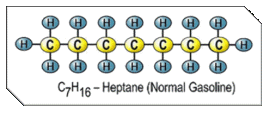Made of hydrogen (Hydro-) and carbon (-Carbon). Their characteristic is their lack of affinity (doesn't mix) with water. There are 3 basic families of hydrocrabons: Light hydrocarbons : gasoline, heptane, cyclohexane, terpene. Heavy hydrocarbons : fuel-oil, diesel, kerosene. Aromatic hydrocarbons : benzene, toluene
Being not miscible ("Mixable") with water, they can be extinguished with ''ordinary'' (B) foams, even if it is recommended to apply film forming foams to get a fast extinction. All of our foams (A/B or 3%-3%) work effectively with these products.
Polar solvents include O (Oxygen) or N (Nitrogen) atoms or halogenes : Cl, Br, F or I.
Their characteristic is their affinity for water (They mix easier or totally with it).
Common groups of Polar Solvents:
Alcohols : methanol, ethanol, E85, isopropanol…
Ketones and aldehydes : acetone, acetaldehyde, methylethylKetone MEK, MIBK…
Esters : Ethyl acetate…
Ethers : diethylether, MTBE, THF…
Glycols : combination 'alcohol + ether' : MEG, MPG, Butoxyethanol, butylcarbitol…
Amines : trimethylamine…
Acids : acetic acid, propionic acid…
Non Alcohol Resistant foam concentrates WILL NOT work with polar solvent products.
This will be an important point with certain ethanol blended fuels.
These materials will break down foam quicker. Foam is still made up of a lot of water so polar solvents can "blend" with the water in foam and break down its structure.




